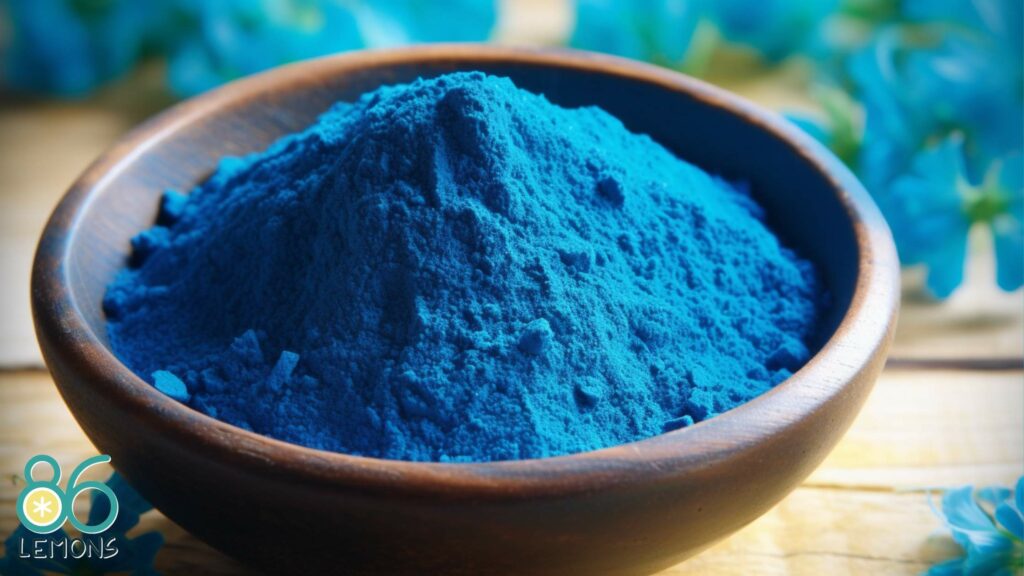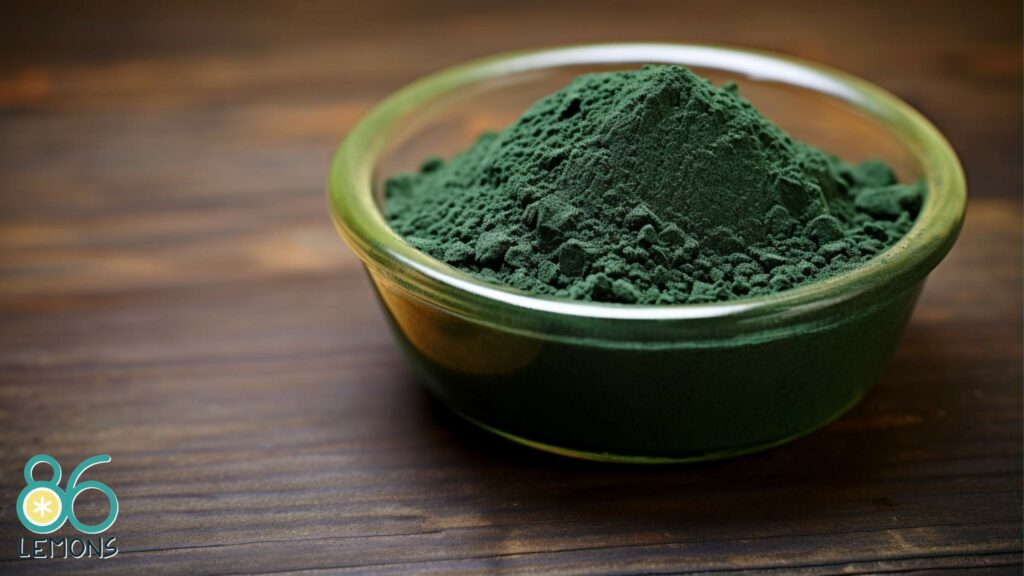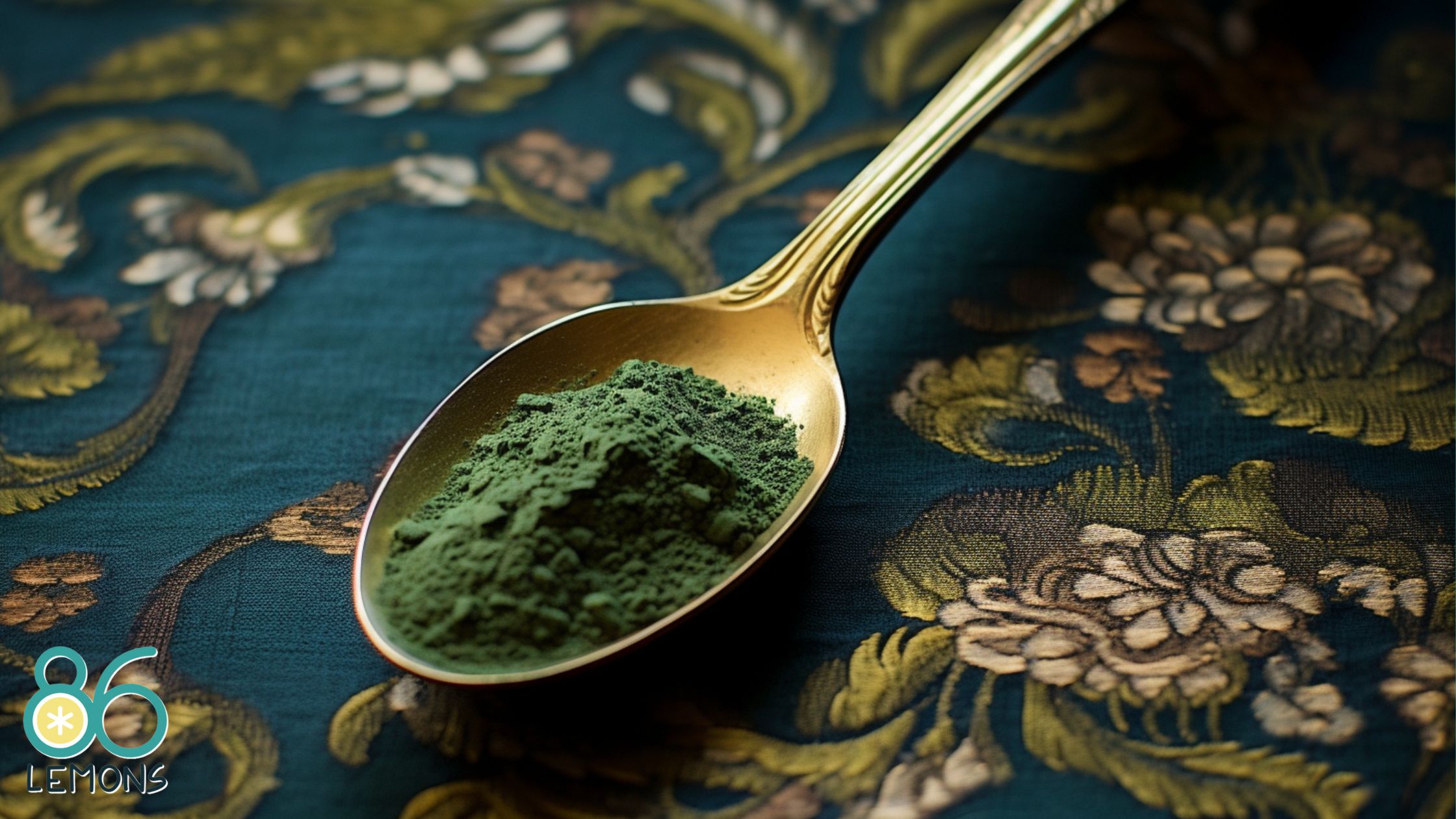I’ve recently come across a fascinating topic relating to the vegan lifestyle—the battle between blue and green spirulina! You might be wondering what the difference is between these two superfoods. Well, let me introduce you to the world of spirulina and shed some light on this captivating subject.
Spirulina is a type of cyanobacteria, commonly known as blue-green algae, and is highly regarded for its incredible nutritional benefits. Blue spirulina and green spirulina both originate from the same source, but they have distinct properties and uses.
The main difference between them lies in their pigments. Blue spirulina is extracted for its phycocyanin pigment alone, giving it that vibrant blue color. On the other hand, green spirulina offers a “full-spectrum” combination of chlorophyll and phycocyanin, which accounts for its green hue.
As I delved further into my research, I discovered that blue spirulina is essentially a fraction of green spirulina. While both provide remarkable health advantages, their specific characteristics might make one more suitable than the other, depending on your needs and preferences. So, let’s dive deeper into the differences and understand the unique properties each type possesses.
Exploring Spirulina
Historical Use of Spirulina
Spirulina is a type of blue-green algae called Arthrospira platensis that has been consumed since the time of the Aztecs. It’s fascinating to know that this ancient civilization recognized the incredible power that spirulina holds for human health thousands of years ago!
Spirulina’s Nutritional Profile
Spirulina is an absolute nutrient powerhouse! As someone who tries to maintain a healthy diet, I’m thrilled to know that spirulina can offer such a fantastic array of essential vitamins and minerals. It also contains significant amounts of protein, making it a terrific addition to vegetarian and vegan diets alike. Some of the fantastic nutrients found in spirulina are:
- Vitamin A
- Vitamin B1
- Vitamin B2
- Vitamin B3
- Iron
- Magnesium
- Calcium
- Potassium
Spirulina Varieties: Blue Vs. Green
Now, let’s dive into the exciting world of spirulina varieties! While blue and green spirulina are both derived from the same cyanobacteria, they have some distinct differences:
- Color: The primary difference between blue and green spirulina is the color. Blue spirulina is extracted for its phycocyanin pigment, while green spirulina contains a combination of chlorophyll and phycocyanin, giving it the characteristic blue-green hue.
- Nutritional Content: Both varieties contain a wide range of essential nutrients. However, blue spirulina is particularly rich in the potent antioxidant phycocyanin, while green spirulina provides a broader spectrum of both chlorophyll and phycocyanin.
- Palatability: Interestingly, many people find blue spirulina to be more palatable than green spirulina. This is because blue spirulina lacks the fishy taste and smell associated with green spirulina.
So there you have it! While both blue and green spirulina offer incredible health benefits, they each have unique characteristics that may appeal to different preferences and needs. I’m definitely excited to include both varieties in my diet for a well-rounded approach to wellness!
Benefits of Blue Spirulina
Antioxidant Power of Blue Spirulina
Blue spirulina is an antioxidant-rich superfood that helps protect our body from oxidative stress. Blue spirulina is actually derived from green spirulina, but the blue version has a more concentrated amount of the potent antioxidant phycocyanin. This gives it an edge in terms of antioxidant power and a milder taste as well.
Here are some amazing benefits of blue spirulina’s antioxidants:
- Combat oxidative stress: It neutralizes free radicals, which cause cell damage and contribute to chronic diseases.
- Anti-inflammatory properties: Phycocyanin in blue spirulina reduces inflammation in our body.
- Support skin health: Antioxidants help maintain healthy skin by reducing damage caused by UV exposure.
Blue Spirulina in Immune Health
My immune system has never felt so supported since I started adding blue spirulina to my diet. Thanks to its unique combination of antioxidants and vitamins, blue spirulina strengthens our immune systems and helps fight harmful bacteria and viruses.
Let me share some exciting benefits of blue spirulina for our immune health:
- Boosts immune response: The nutrients in blue spirulina promote a healthy immune response, ensuring our body can effectively fight infections.
- Anti-cancer properties: Studies have shown that phycocyanin in blue spirulina can inhibit cancer cell growth, making it a potential ingredient in cancer-fighting treatments.
I can’t wait to keep using this amazing superfood to enjoy the many benefits it provides for my overall health and well-being!
Benefits of Green Spirulina
As a health enthusiast, I can’t help but be excited about the amazing benefits of green spirulina! This incredibly nutrient-dense supplement has a wide range of health benefits that I can’t wait to share with you.
Green Spirulina and Heart Health
One of the things I love about green spirulina is its potential to support heart health. It contains essential nutrients and anti-inflammatory properties that may help reduce inflammation in the body. By lowering inflammation, this superfood could potentially fight against various heart-related issues, like high cholesterol and hypertension!
Here are some nutrients found in green spirulina that support heart health:
- Phycocyanin: This pigment-protein complex is known for its antioxidant power and may help reduce inflammation.
- Omega-3 fatty acids: These healthy fats are known to support heart health by lowering cholesterol levels and improving overall cardiovascular function.
Detoxification and Digestive Benefits
Another fantastic aspect of green spirulina is its ability to aid in detoxification and digestion. It’s packed with essential nutrients that help support a healthy digestive system and promote the elimination of toxins from the body. Plus, the high chlorophyll content found in green spirulina can also assist in cleansing our system.
Some benefits of green spirulina for detoxification and digestion include:
- Improved gut health: Green spirulina is rich in prebiotic fibers that help promote the growth of beneficial gut bacteria, which may improve digestive health.
- Heavy metal detoxification: Its potent chelating properties may help remove harmful heavy metals from our bodies.
So next time you’re looking for a nutrient-packed supplement to support your heart health and digestion, give green spirulina a try!
Comparing Nutritional Values
Protein and Amino Acids Showdown
Both blue and green spirulina have an impressive protein content. Spirulina is known to provide around 60% of its weight in protein, making it a fantastic plant-based source! What really made me excited is that it contains all essential amino acids, which are the building blocks for protein in our body.
When comparing blue and green spirulina, we must remember that blue spirulina is the phycocyanin extract from green spirulina. In this extraction process, some of the protein content is lost. So, if you are looking for a complete protein source, green spirulina might be a better choice for you.
Vitamin and Mineral Clash
My research shows that spirulina is packed with vital vitamins and minerals. Specifically, green spirulina boasts an amazing nutrient profile, including:
- Iron: which helps with oxygen circulation in our bodies.
- Potassium: essential for maintaining blood pressure and nerve function.
- B Vitamins: vital for energy production and overall metabolic health.
- Magnesium: crucial for maintaining muscle function and bone health.
Now, since blue spirulina is an extract, it lacks the comprehensive nutritional profile found in whole-food green spirulina. Blue spirulina focuses primarily on providing concentrated phycocyanin, which means you won’t get the same spectrum of nutrients as you would with green spirulina.
However, considering the health benefits of phycocyanin, blue spirulina is still highly valuable. It has powerful antioxidant and anti-inflammatory effects, making it an incredible asset for our overall well-being!
I must say, it’s truly exciting to learn about the nutrient-rich profiles of both blue and green spirulina. Whether you’re in need of protein, essential vitamins, or minerals, spirulina offers a fantastic, natural source for them all!
Applications in Daily Life
Adding Color and Nutrients to Food
I’m so thrilled to share with you the many ways you can incorporate both green and blue spirulina into your daily meals! Whether you use it as a supplemental powder or mix it into sauces, these superfoods can add vibrant colors and a nutrient boost to your dishes.
For instance, you can add a dash of blue spirulina to your homemade salad dressing, giving it a lovely new hue while also adding extra nutrients. It’s perfect for creating instagram-worthy dishes that will impress everyone.
If you’re into baking, green spirulina can be mixed into your dough, adding an exciting splash of color to bread, cookies, and even pancakes. Not only will your baked goods look more enticing, but they’ll also pack a nutritious punch, due to spirulina’s comprehensive nutritional profile.
Spirulina in Beverages and Smoothies
Now, let me tell you how you can make your beverages and smoothies more exciting and healthier with spirulina! Adding blue or green spirulina powder to your favorite juices, smoothies, or even milkshakes can give them a fun, vibrant color and increase their nutritional value.
For example, you can easily create a blue spirulina smoothie by blending some blueberries, banana, yogurt, and a teaspoon of blue spirulina powder. This concoction will not only be a treat for your taste buds but also provide you with concentrated phycocyanin, which has various health benefits.
Benefits of Green Spirulina:
- Broader range of health benefits due to its comprehensive nutritional profile
- Can be easily added to various recipes, including baked goods
Benefits of Blue Spirulina:
- Provides concentrated phycocyanin
- Milder taste compared to green spirulina
Similarly, green spirulina can be effortlessly incorporated into your beverages. If you like yogurt, try mixing green spirulina powder into your bowl, creating a beautiful green color while enjoying the health benefits that come with it.
So next time you make your favorite beverage or smoothie, consider adding some spirulina to enhance its color, taste and nutrient profile. Your body and your Instagram feed will thank you!
Taste and Aesthetics

The Visual Appeal of Blue Spirulina
I can’t help but get excited when I think about the strikingly vibrant color of blue spirulina! It has quickly gained popularity as a natural colorant for smoothies, baked goods, and even pasta – all while still maintaining its impressive nutritional profile. Just imagine brightening up your morning smoothie bowl with this stunning shade of blue or surprising your friends with some electric blue pancakes. It’s a fun and creative way to incorporate superfoods into your diet!
| Green Spirulina | Blue Spirulina | |
|---|---|---|
| Color | Dark green | Intense blue |
| Taste | Earthy | Much milder |
The Subtle Flavor of Green Spirulina
When it comes to taste, green spirulina is often described as having a more earthy, slightly bitter flavor. I’ve personally found that this distinct taste can easily be masked when it’s mixed with delicious fruits, greens, and liquids in a smoothie. Plus, the palatable quality of green spirulina is elevated by its substantial nutritional content and variety of essential vitamins, minerals, and proteins.
Some tips for incorporating green spirulina into your diet:
- Add it to your favorite smoothies, juices, or protein shakes.
- Mix it into yogurt, oatmeal, or chia pudding.
- Sneak a spoonful into your favorite baked goods recipes, like muffins or cookies.
One thing I’ve noticed is that although green spirulina has an earthy smell, the aroma isn’t as prominent when used in food applications.
So whether you’re after a visually stunning ingredient with a milder flavor like blue spirulina, or you prefer the nutritional powerhouse of green spirulina, you can find creative ways to incorporate these superfoods into your day-to-day eats. Trust me, your taste buds and your body will thank you!
Safety and Side Effects
Possible Health Risks
It’s exciting to think about the potential health benefits of blue and green spirulina, but I need to share some important safety concerns about them too. There are a few possible health risks that you should be aware of.
Besides, allergic reactions could be a risk for some people. If you have a history of allergies, particularly to seafood, you should be cautious when trying spirulina. Symptoms of an allergic reaction may include itching, hives, or difficulty breathing.

Recommended Dosages
One of the issues is the potential presence of toxic substances in some spirulina products. Some spirulina may contain microcystins, which are harmful compounds produced by certain algae. These toxins have been linked to liver damage and other health problems. So, it’s essential to choose a high-quality, non-GMO spirulina product to ensure its safety.
Now that we’ve discussed the possible risks, let’s talk about the recommended dosages for spirulina consumption. For a daily dose, it’s generally suggested to take around 1-3 grams of spirulina powder, but some studies have used doses up to 10 grams per day.
To make things even more exciting, here’s a brief summary of the recommended dosages.
| Type | Daily Dose | Max. Dose |
|---|---|---|
| Powder | 1-3 grams | 10 grams |
| Capsules | 3-6 caps | 12 caps |
Remember, always start with a smaller dose and gradually increase it as your body gets accustomed to it. Moreover, consult your healthcare professional for personalized advice.
Spirulina, both blue and green, offers numerous benefits, but it’s crucial to be aware of possible health risks and recommended dosages. By staying informed, you can enjoy the perks of this exciting superfood while minimizing potential side effects. Have fun exploring the world of spirulina!
READ NEXT: How Long is Tofu Good After the Best By Date?
Consumer Considerations: Cost and Availability
Blue Spirulina: Pros and Cons
I love blue spirulina, but one of the major cons is the cost. Because of the extraction process required to obtain phycocyanin, blue spirulina is more expensive than green spirulina. However, this vibrant blue superfood has some incredible pros to consider.
When it comes to availability, blue spirulina is not as commonly found in local stores, but it can be easily purchased from a variety of online retailers as a dietary supplement in powder, tablet, or capsule form.
| Blue Spirulina | Pros | Cons |
|---|---|---|
| Cost & Availability | High in antioxidants | More expensive |
| Milder taste compared to green | Less commonly found in local stores |
Green Spirulina: Where to Buy

As for green spirulina, it’s more affordable and widely available than blue spirulina. You can find green spirulina supplements in various forms, such as powders, tablets, and capsules, in most health food stores and online retailers.
When shopping for green spirulina, make sure to look for a reputable brand that guarantees the quality and purity of their product. As a superfood supplement, green spirulina boasts numerous nutritional benefits, including being a rich source of vitamins, minerals, and protein.
Whether you choose blue or green spirulina comes down to personal preference, budget, and availability. Both options can be fantastic additions to your health journey!


